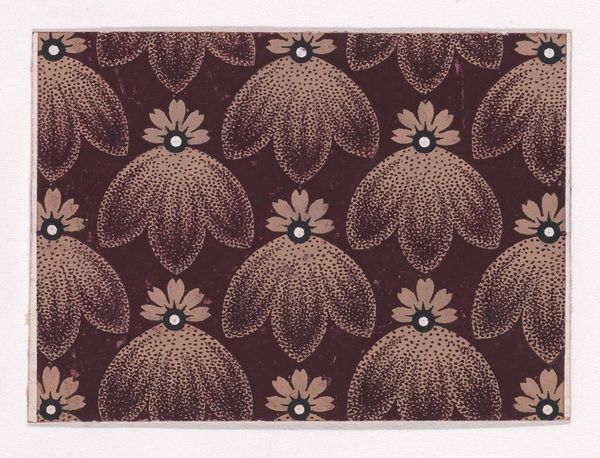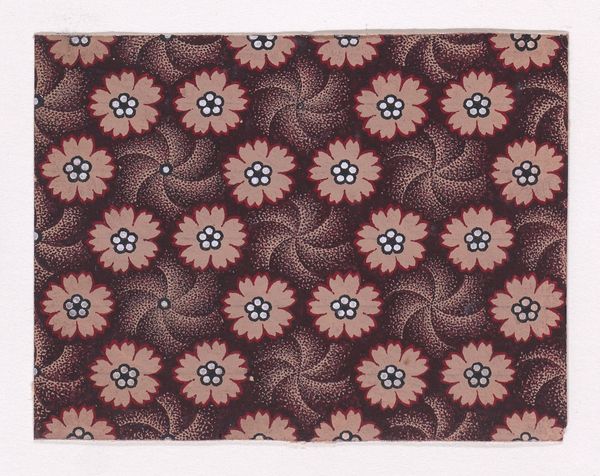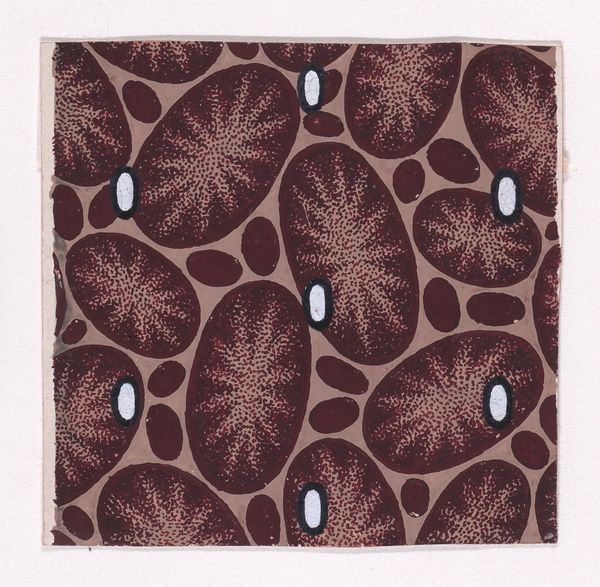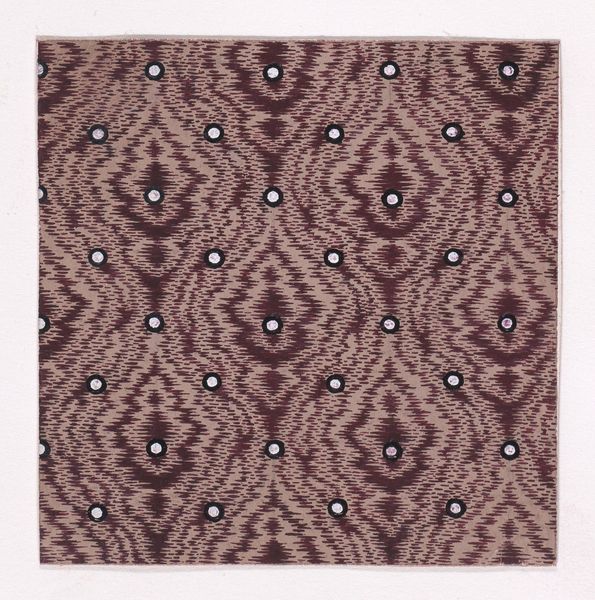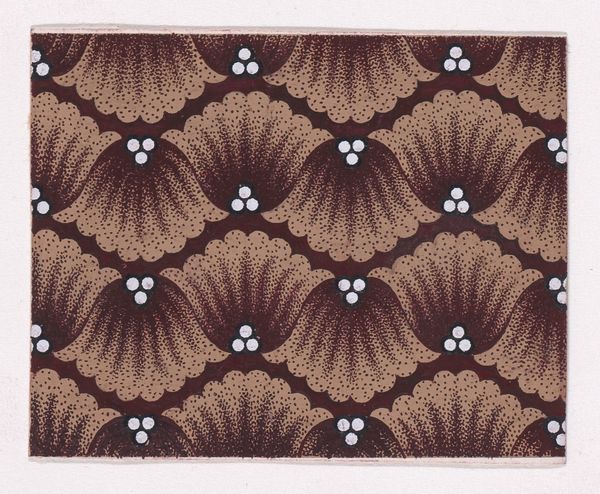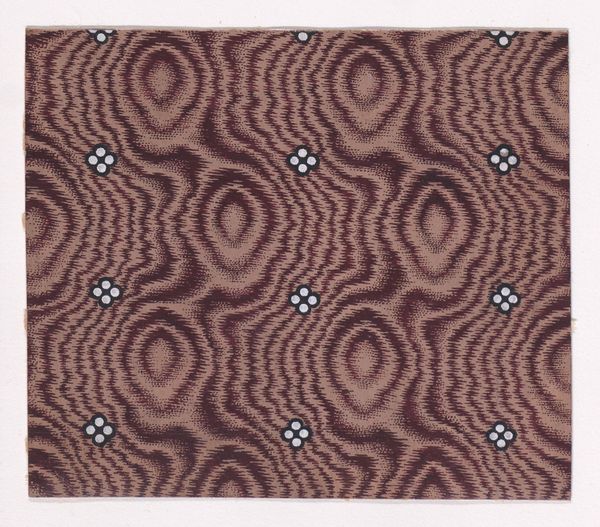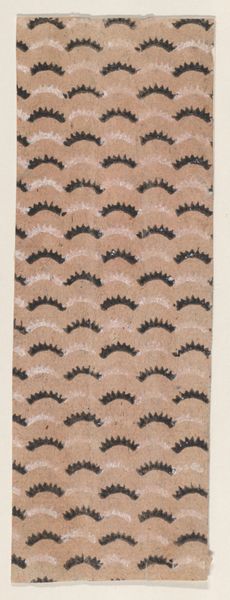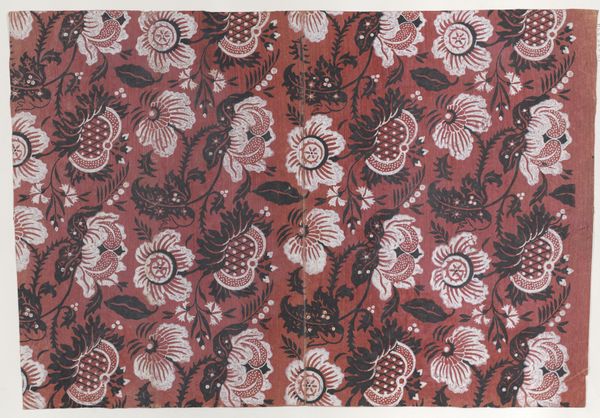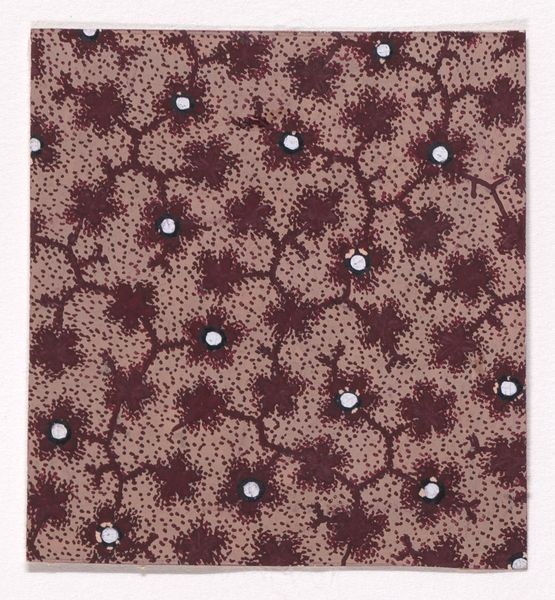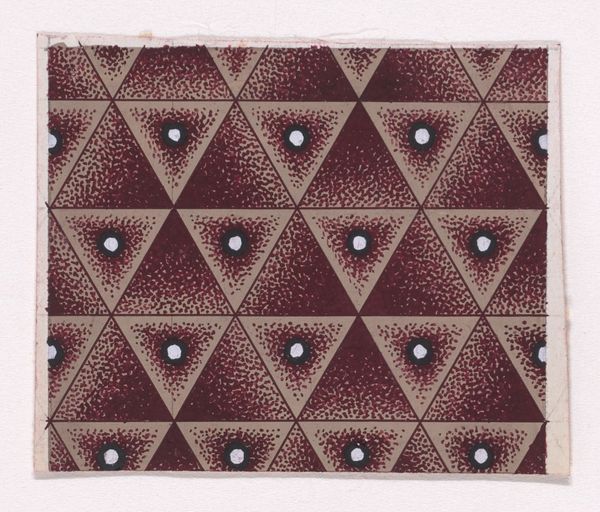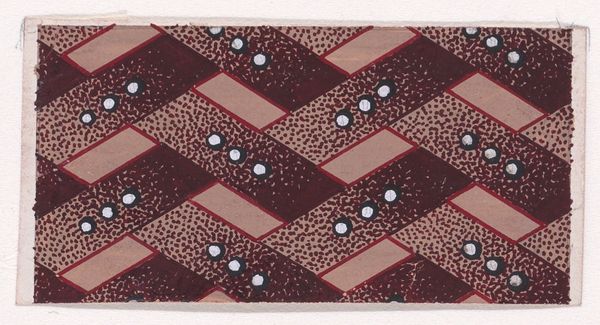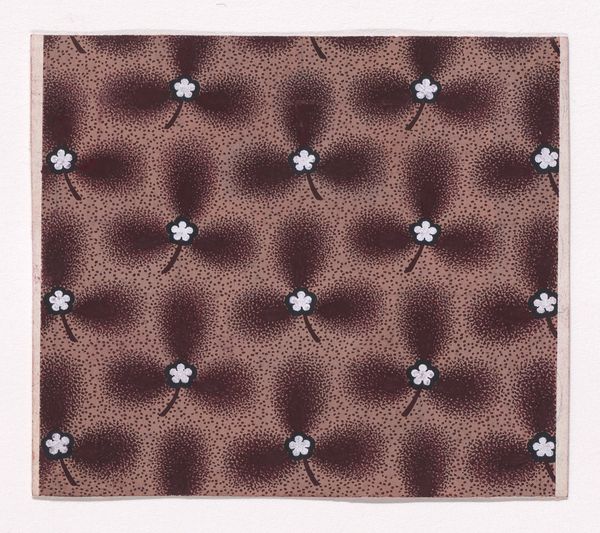
Textile Design with Alternating Rows of Stylized Leaves Decorated with Rosettes and Pearls Over a Pattern of Overlapping Scales 1840
0:00
0:00
#
geometric pattern
#
organic pattern
#
flower pattern
#
decorative-art
Dimensions: Sheet: 2 in. × 2 1/4 in. (5.1 × 5.7 cm)
Copyright: Public Domain
Curator: Here we have a textile design from 1840, currently held at the Metropolitan Museum of Art. The anonymous artist created a pattern featuring stylized leaves with rosettes and pearl-like accents, layered over what seems to be overlapping scales. Editor: My first thought is that it feels very…contained. The palette is restrained, and while the design has some organic elements, it’s all carefully organized into a grid. It evokes a sense of order and even perhaps suppression of natural exuberance. Curator: Precisely. Note how the alternating rows create a very measured, almost predictable rhythm. The design limits any unbridled flow; it instead prefers structured repetition. This rigid structure can be read as a symbol of societal expectations during the 1840s. Think about Victorian-era constraint. Editor: Right. I immediately start considering the potential consumer: who would have used this fabric? What societal roles did they occupy? What was their access to this kind of aesthetic? Was it designed to reaffirm or subtly subvert those gendered expectations, class differences, or colonial patterns? Were these mass-produced prints and patterns more readily available for middle class households than for working class families, especially women? Curator: The use of organic motifs, juxtaposed with rigid scales, forms an intriguing dialectic. This kind of stylized representation doesn't mimic nature faithfully. Instead, it distills it, organizing natural elements according to compositional principles. Editor: True, but there’s also a socio-political distillation happening. It prompts a dialogue on how the decorative arts were often relegated to women while still impacting economies of power and access in an uneven way. Looking at this reminds me that design—like any other visual language—embodies cultural biases and beliefs, shaping not just aesthetics but also everyday lived experience. Curator: Agreed. It's the skillful articulation of design elements into a unified pattern that grants this work its enduring visual interest. The contrasting elements—curves, rosettes and geometric scales—complement each other. Editor: Yes, the push and pull are crucial for sure. The context just invites such an important consideration, highlighting decorative art's influence, power, and presence. Curator: Examining its composition has heightened my sense of its considered structure. It offers an enduring example of design harmony through careful constraint. Editor: Indeed, viewing this piece sparks important inquiries concerning the convergence of design, society, identity, and power, emphasizing a far-reaching legacy of the domestic and decorative arts.
Comments
No comments
Be the first to comment and join the conversation on the ultimate creative platform.
